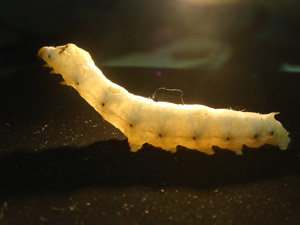Last week Notre Dame and University of Wyoming scientists announced a breakthrough in the commercial mass production of spider silk.
For years I have heard speakers talk glowingly of spider silk--about its tensile strength that is greater than steel, its amazing ability to stretch, and its ability to retain its strength at temperatures as low as -40 degrees C. It also is thought to possess antimicrobial properties that might make it useful in medicine. Possible uses of spider silk include making superior surgical suture thread, bullet-proof vests, automobile air bags and other strong, lightweight fabrics that could be used for clothing like running socks and athletic shirts.
Unfortunately, spider silk is amazingly difficult to obtain. Spiders have been milked, or more properly, "silked"; but this impractical for obtaining all but the smallest quantities of silk. This is what makes the Notre Dame story interesting. Molecular biologists have attempted in recent years to product silk through the process of genetic engineering. One apparently failed biotech venture involved insertion of spider silk genes into goats, that produced silk in their milk. The idea was that the silk could be extracted from the milk. Lately researchers have focused on inserting spider silk genes into the all-time best producers of silk, the silkworm caterpillar. The result is a caterpillar that spins a combination of silkworm and spider silk, with improved toughness and elasticity.
All this reminds me of the many times people have asked me, "What good is that bug?" Spider silk research is just one example of the many amazing products that are possible if we protect, and take the time to learn about our biological heritage. Who would have guessed that tiny spiders might hold the secret of antibacterial socks, or a better air bag in your car? And what other useful insects or arthropods are out there, if we just take the time to preserve and study them? All this becomes especially significant when you consider that hundreds of thousands of insects will likely go extinct over the next 50 years if habitat destruction is not controlled. The loss to humankind of failing to protect these resources is literally incalculable.

No comments:
Post a Comment